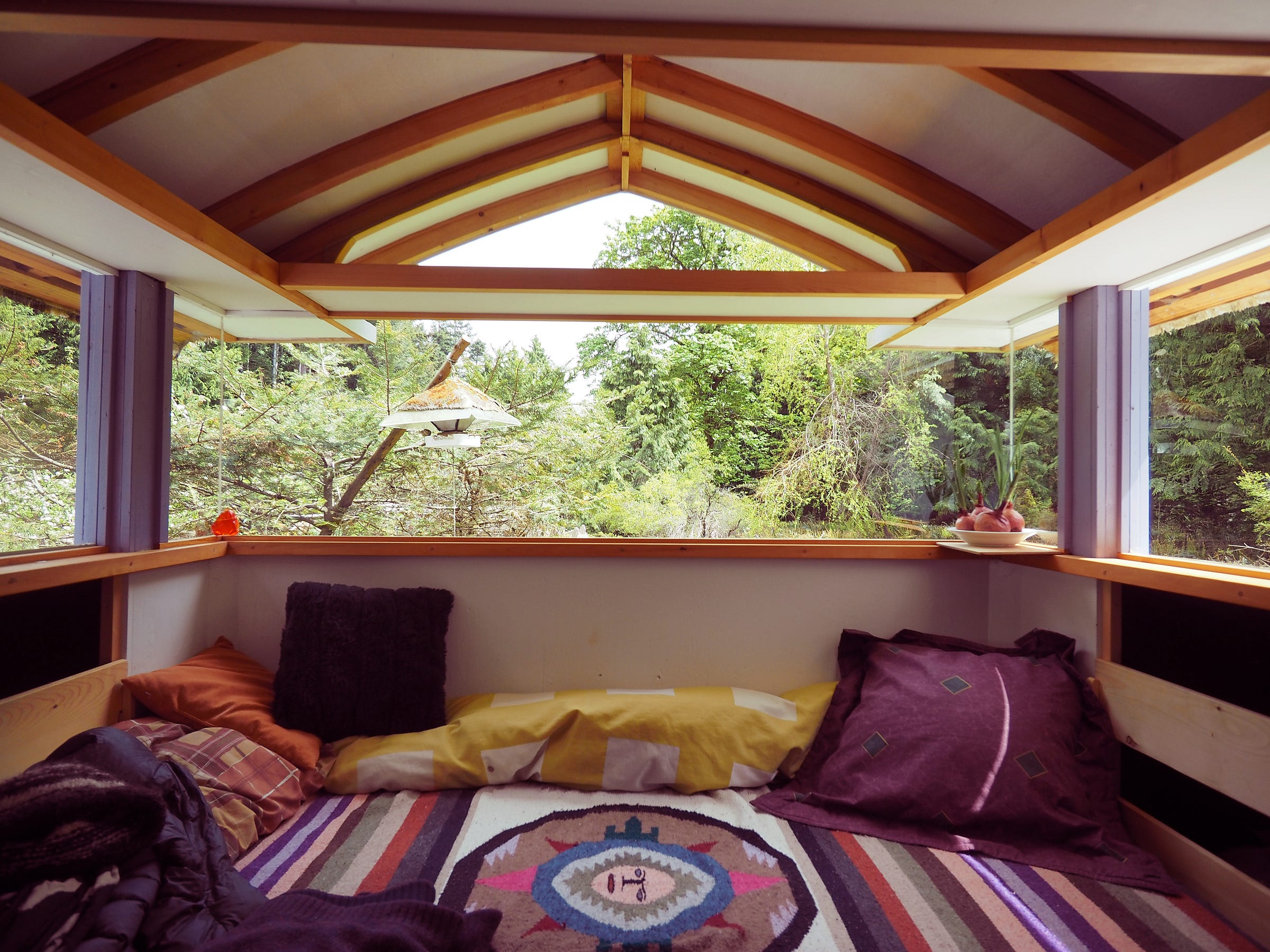
For context, see my first article on Lloyd below, titled “Lloyd House, My All-Time Favorite Builder“
About 10 years ago, Lloyd left his remote home on the hillside north of Tofino and returned to Hornby Island (a small island in the Strait of Georgia, in between mainland Canada and Vancouver Island in British Columbia.) I’ve found it’s often the case that people who pioneer a difficult site out in the wilderness return to easier surroundings when they get older.
By the time I visited him in 2017 here (with mutual friend Michael McNamara), he had a lot of fans, and he was tired of people dropping in unannounced. He wanted to live anonymously and peacefully.
I shot these photos with the understanding that I wouldn’t publish them at that time. Now that he’s gone (he passed away in 2022), his family gave me permission to post these.
It’s very unobtrusive from the outside. The exterior doesn’t convey what’s inside: the symmetry, the light, the balance: what the Japanese would term shibui, an adjective denoting “simple, subtle, and unobtrusive beauty.”
It feels wonderfully spacious for such a small space (as did his conversion of the 1990 Ford Econoline van as depicted on pp. 8-9 in Tiny Homes On The Move).


Note: although we didn’t spend a lot of time together, Lloyd and I were close. He was a few years older than me and we’d grown up in the ‘40s and ‘50s — before television, in an era before the world was turned upside down by the counterculture and the ‘60s. There’s a camaraderie of us old guys (there really is such a thing as the Good Old Days), and Lloyd and I were on the same page not just about building, but life in general.
He was difficult to photograph. I had to shoot multiple photos to get this one.
We jousted about who was the alpha Lloyd. It was a delight each time we hung out. I loved everything he did and he liked my reportorial skills and considered me fit to document his career and creations (which no one had done).
One night we had dinner at his cliffside home with a young couple visiting from France. After dinner, the woman got out a concertina and started playing some French café music. Lloyd was sitting on a stool, and as she played, his feet started tapping; pretty soon he jumped up and started dancing — beautifully. I had no idea he could dance like this. (Later, Michael told me he was indeed a dancer.) It was one of those “sweet spots in time.”
I wanted to capture the moment photographically, but realized that if I started shooting pictures, it would change the chemistry, so I just enjoyed the music and dancing. Since then, I’ve often refrained from shooting photos (often of music) lest I spoil the moment; and there’s the double benefit of the enjoying the music more fully by observing and not recording.
I last saw him when I did a slideshow of my book Small Homes at the Hornby Island Community Center in 2017. As we got ready to leave, he said ”See you around,” and I replied “Yes, but not in this world.”
I’m not sure why I said that, but his eyes lit up and he said, “Yes, yes, that’s true” (he was always looking for deeper meanings in everyday events), and it turned out to be prophetic. It was the last time we saw each other.
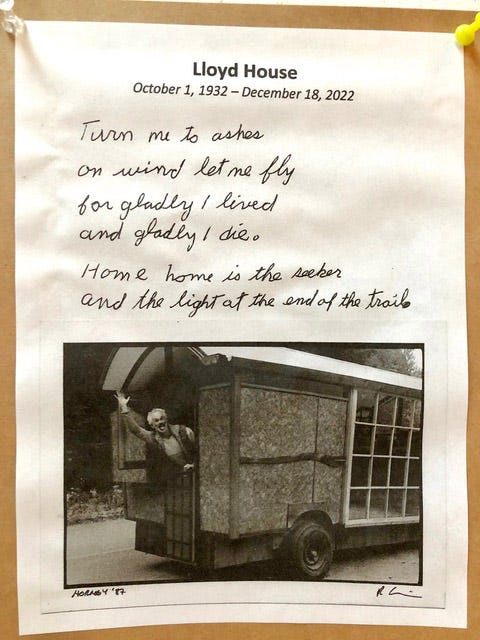
Note: there are 18 pages of Lloyd’s creations in Builders of the Pacific Coast.
Big thanks to Michael McNamara, who introduced me to Lloyd and guided me to many of the builders in Builders of the Pacific Coast





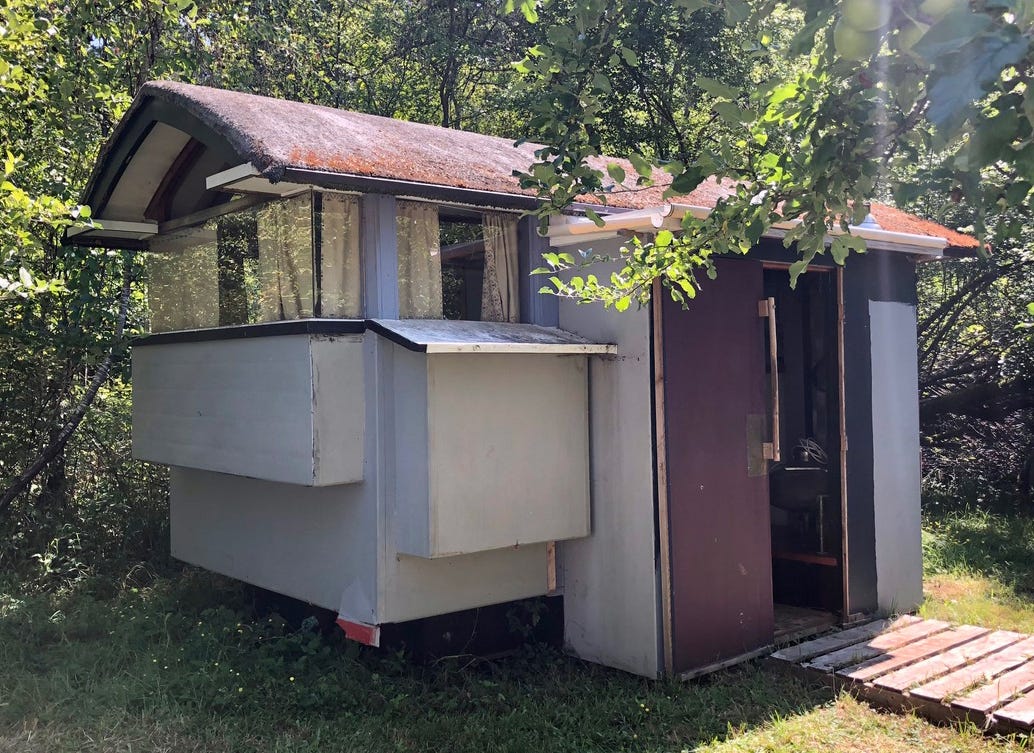

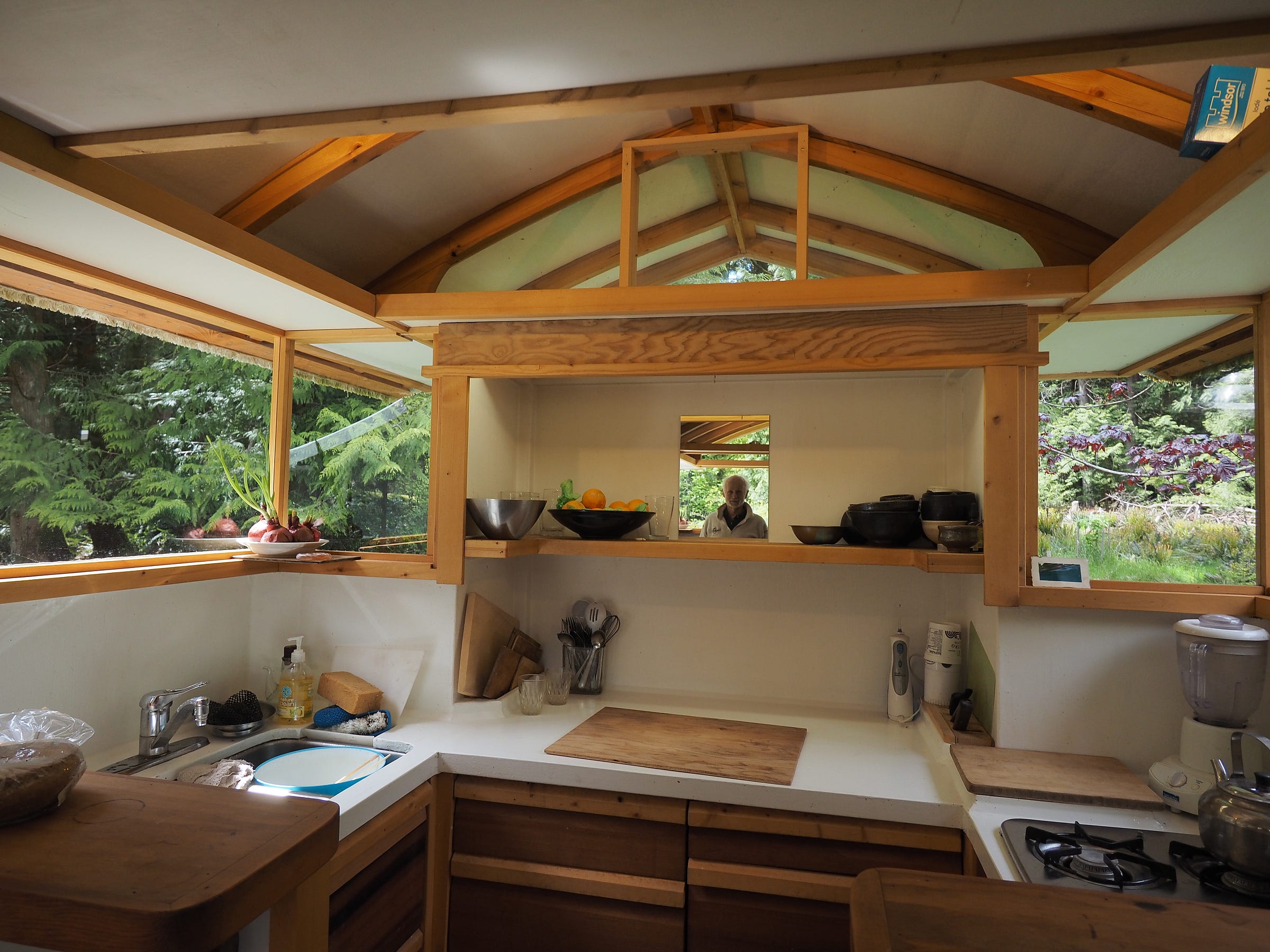
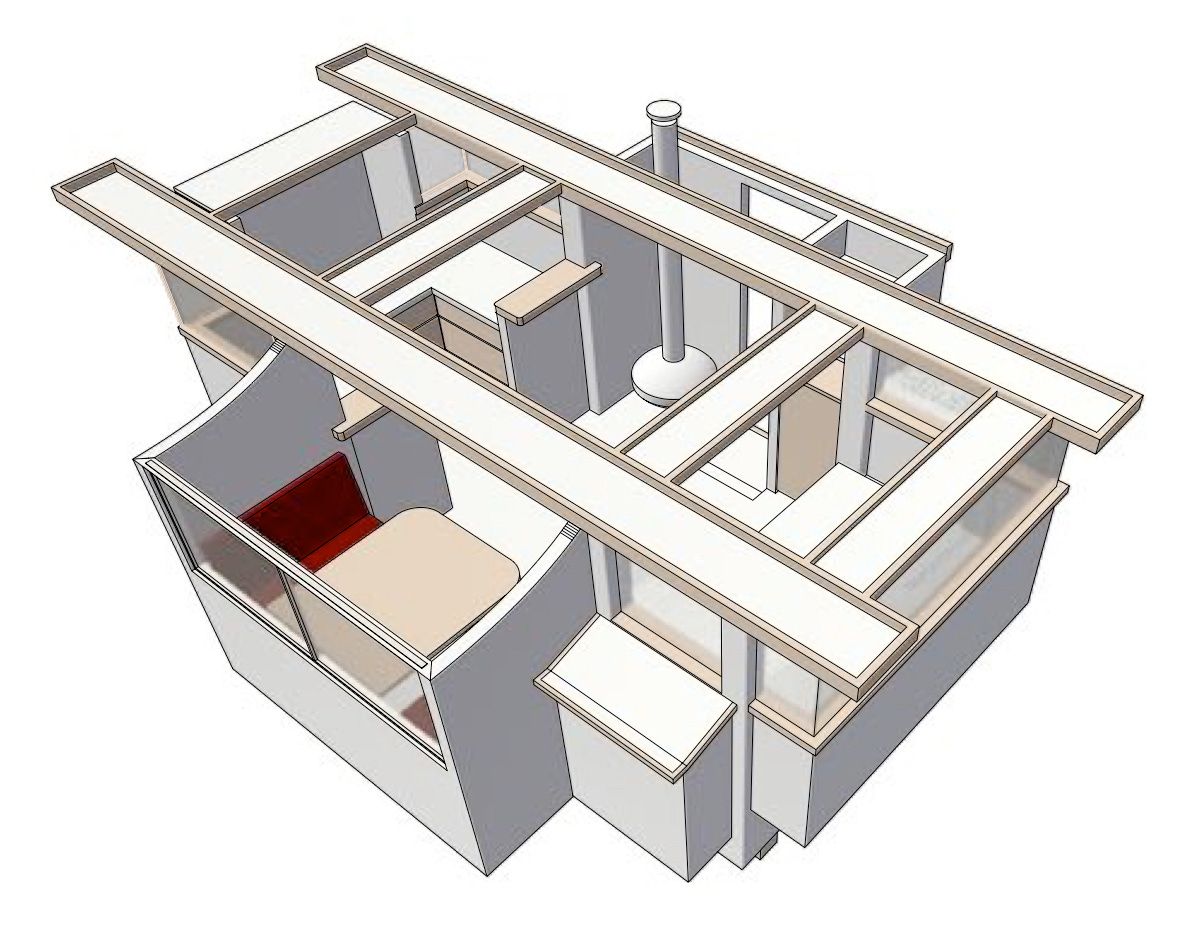
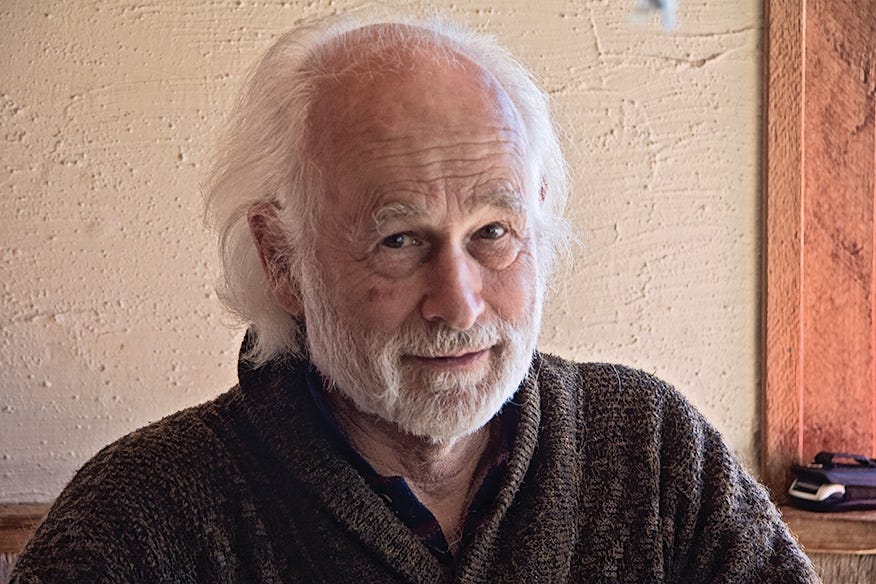
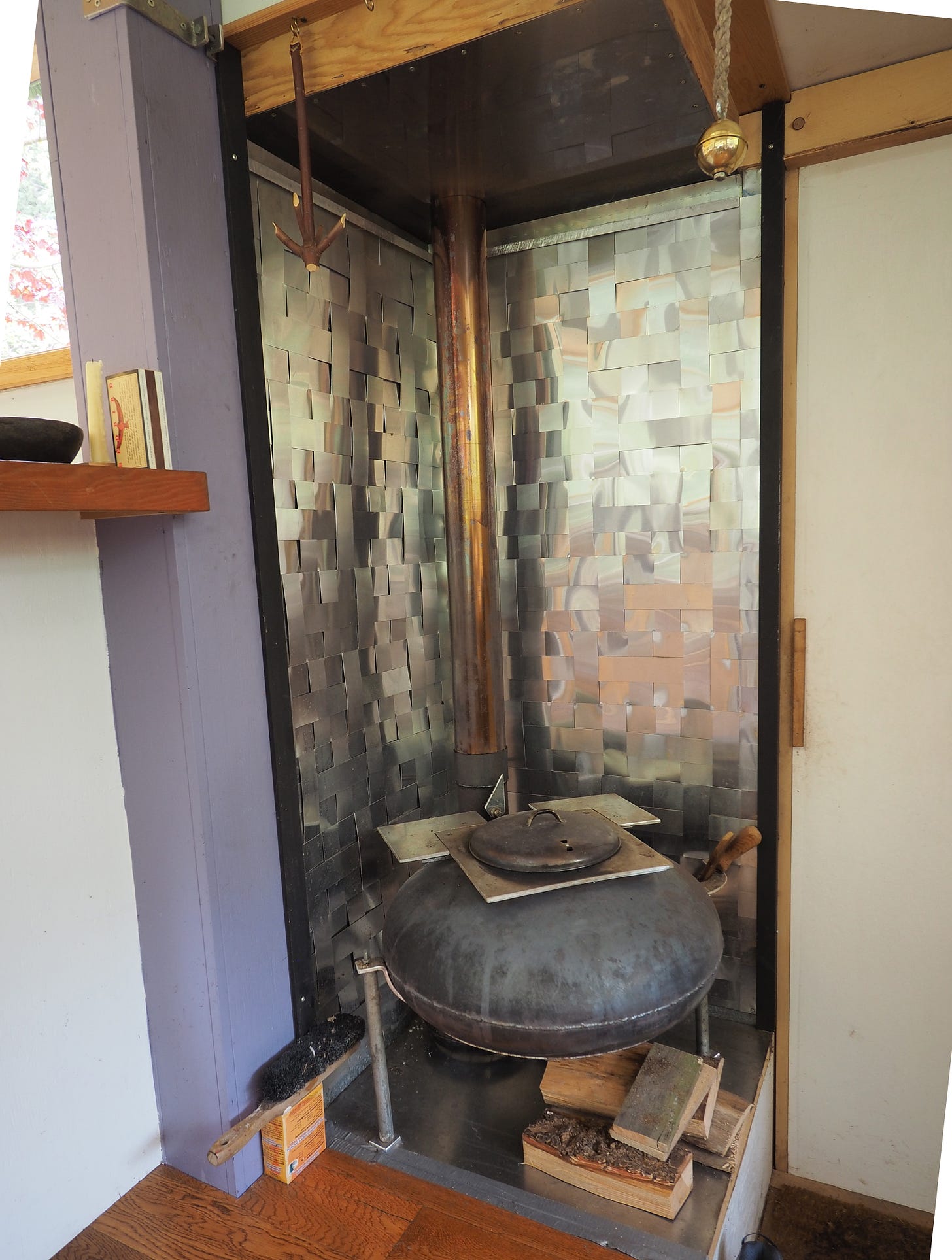

And it’s good to remember that what you don’t capture in photos you can still capture in words.
Dear Lloyd, I live in Davis CA, but work for a meditation center in Woodacre (in-person on Mondays), and I am seeking your advice and counsel on a project that would be a non-profit 501c3 evolution in communal living, and an experiment in testing the scalability and sustainability of consciously designed community. Upon researching the history of the domes here at UC Davis, I just read the entirety of "Refried Domes," and share all of your values and conclusions. Of course I'm impressed with Lloyd House's beautiful creation here (the carpet roof caught my eye), but how to make something like this cost-effective and also make use of indigenous shelter designs? I'm not on social media. Please reach out to me at kimballa100@gmail.com. (Amanda)